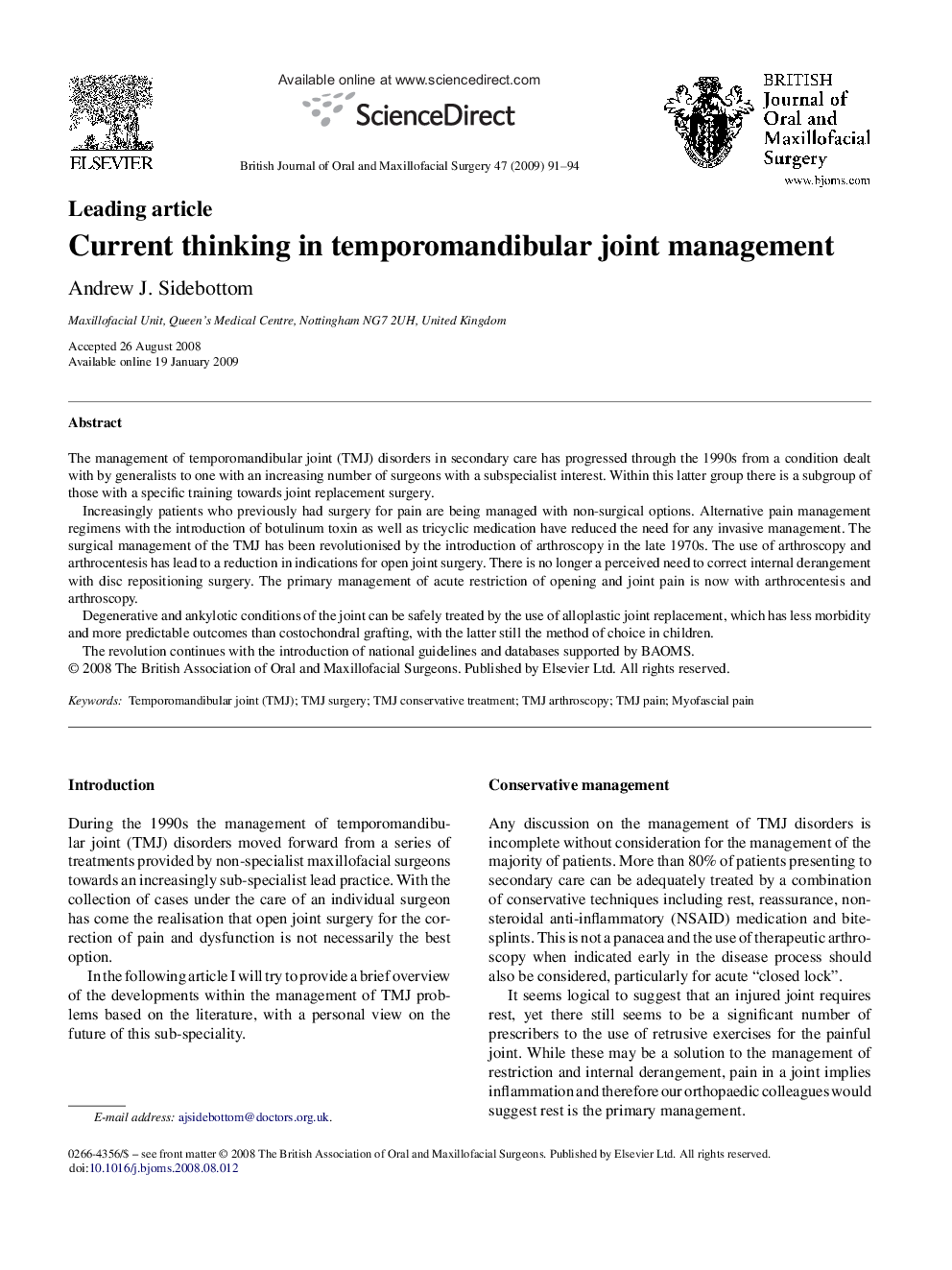| Article ID | Journal | Published Year | Pages | File Type |
|---|---|---|---|---|
| 3126076 | British Journal of Oral and Maxillofacial Surgery | 2009 | 4 Pages |
The management of temporomandibular joint (TMJ) disorders in secondary care has progressed through the 1990s from a condition dealt with by generalists to one with an increasing number of surgeons with a subspecialist interest. Within this latter group there is a subgroup of those with a specific training towards joint replacement surgery.Increasingly patients who previously had surgery for pain are being managed with non-surgical options. Alternative pain management regimens with the introduction of botulinum toxin as well as tricyclic medication have reduced the need for any invasive management. The surgical management of the TMJ has been revolutionised by the introduction of arthroscopy in the late 1970s. The use of arthroscopy and arthrocentesis has lead to a reduction in indications for open joint surgery. There is no longer a perceived need to correct internal derangement with disc repositioning surgery. The primary management of acute restriction of opening and joint pain is now with arthrocentesis and arthroscopy.Degenerative and ankylotic conditions of the joint can be safely treated by the use of alloplastic joint replacement, which has less morbidity and more predictable outcomes than costochondral grafting, with the latter still the method of choice in children.The revolution continues with the introduction of national guidelines and databases supported by BAOMS.
